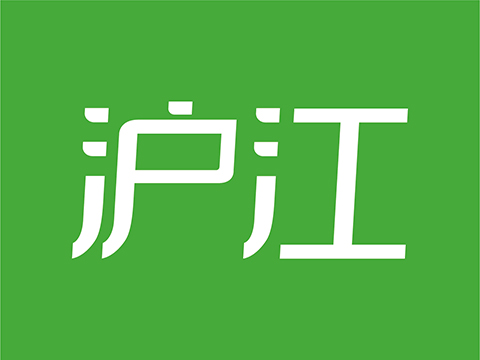想要学好英语,对单词的积累和语法的掌握一定要重视。掌握英语语法一定要理解和记忆,下面是英语情态动词学习过程中需要注意的五点,大家可以作为了解。
一注意其基本用法
used to的意思是“过去经常”“以前常常”,其后接动词原形。如:
Life here is much easier than it used to be. 这里的生活比过去容易多了。
It used to be believed that sugar could decay the teeth. 过去人们认为糖会腐蚀牙齿。
Our company used to do business with theirs. 我们公司过去和他们的公司常有业务往来。
My parents used to live in South America and I used to fly there from Europe in the holidays.我双亲常在南美洲住,假期里我常从欧洲乘飞机到那里去。
—Do you play golf? 你打高尔夫球吗?
— No, but I used to. 不打,但我过去打。
We used to go camping every summer when we were students. 我们当学生时每年夏天我们都去野营。
二注意used to的否定式
used to的否定式直接在used后加not构成或借助动词did构成。如:
I used not / usedn’t to enjoy listening to rock music. 我过去不喜欢听摇滚音乐。
My mother didn’t use to be so forgetful. 我妈妈原来不是这么健忘的。
三注意used to的疑问式
used to的疑问式,直接将used置于句首构成疑问式,或借助动词did构成。如:
Did you use to play football on the playground? 你以前常在操场踢球吗?
There used to be some pine trees here, usedn’t there? 这里原来长着许多松树,是不是?
Used you to make the fairy stories up out of your own head? 你曾经自己杜撰童话故事吗?
You used to go there, usedn’t / didn’t you? 你过去常到那儿去,是吗?
Where did you use to live? 你过去是住哪儿的?
四要注意容易混淆的三个used
(1) used to 意为“过去经常”,其中的 to 是不定式符号,后接动词原形。 如:
We used to go there every year. 我每年都去那儿。
(2) be used to 意为“习惯于”,其中的to是介词,后接动词要用动名词。如:
He is used to glancing over newspapers after supper. 他习惯吃过晚饭后浏览一下各种报纸。
After three weeks she had got used to the extreme heat. 三个星期后她就适应酷热的环境了。
(3) be used to 有时可能是动词 use 的被动语态结构, 意为“被用来”,其中的 to 为不定式符号,其后要接动词原形。如:
Nylon is used to make stockings. 尼龙被用来造袜子。
五要注意used to 与would的用法比较
两者都表示过去的习惯。当表示过去习惯性的动作时可互换,如:
When we were children we would / used to go skating every winter. 我们小时候,每年冬天都去溜冰。
(1) used to表示过去的状态,would表示过去反复的动作。如:
She used to be a quiet girl. 她以前是一个文静的姑娘。
He is not what he used to be. 他已不是从前的他了。
(2) used to表示过去跟现在对照,其含义为“现在已不”。如:
He doesn’t smoke these days, but he used to. 他现在不抽烟,但以前是抽的。
There used to be a hospital here. 这儿过去是一家医院。
情态动词ought to的用法、注意及与相关词的区别:
一、ought to 的三条主要用法
(1) ought to 表示义务或责任
ought to 表示义务或责任时,其意为“应该”:
We ought to leave at once. 我们应该马上离开。
Such things ought not to be allowed. 这类事不该容许。
(2) ought to 表示建议或劝告
ought to 表示建议或劝告时,其意为“应该”:
You ought to see the new film. 你应该看看这部新电影。
We oughtn’t to take risks. 我们不宜于冒险。
He said I ought to write an article about it. 他说我应当写一篇文章谈这事。
(3) ought to 表示推断
ought to 表示推断时,其意为“应该”、“可能”:
That ought to be enough food for all of us. 那些该够我们大家吃的了。
Ask John. He ought to know. 问问约翰吧,他该知道。
I ought to be fit for work next month. 下个月我想必可以工作了。
注:用ought to 表示推断时,语气较肯定,通常指的是一种合乎逻辑的可能性(与should表推断时相似),有时可译为“准是”(但语气比must要弱):
That ought to [should] be Janet coming upstairs now. 正在上楼的准是珍妮特。
二、ought to 后接动词所用形式
根据不同情况ought to后可接不同的动词形式:
1. 接动词原形
用于谈论现在或将来的情况。(见上例)
(2) 接进行式:
用于谈论正在进行的事:
You oughtn’t to be talking so much,Annie. 你不宜讲这么多话,安妮。
It isn’t what I ought to be doing. 这不是我现在应该做的事。
有时表示将要发生的事(正如用进行时态表示将来一样):
I ought to be going. 我该走了。
We ought to be hearing from him soon. 我们不久应当会接到他的信。
(3) 接完成式
用于过去的情况,可指过去已经发生的情况,也可接本该发生而实际上未发生的情况:
They ought to have arrived by now. 他们现在应该已经到了。
I ought to have helped her,but I never could. 我本该帮助她的,却从未能这样做。
I don’t think you ought to have done that. 我想你不应该这样做的。
三、使用ought to 的注意点
(1) 在否定式中
用ought not 或oughtn’t,在疑问中将ought提到主语之前:
He ought to go now, oughtn’t he? 他现在该走了,是吗?
(2) 在美国英语中
ought to用于否定句和疑问句时可将to省略(但在肯定句中to不宜省)。另外,在省略句中也可以省去to:
Ought we (to) have done it? 我们本该做此事吗?
"Ought I to go?" "Yes, you ought (to)." “我该去吗?”“对,你该去。”
四、ought to与 should的用法区别
(1) 通常可互换
一般说来,两者可替换,只是ought to语气稍重:
You ought to [should] go and see Mary sometime. 你应该什么时候去看看玛丽。
The train ought to [should] have arrived at six. 火车本应该6点钟到的。
(2) 主要区别
表示出于法令规则、行为准则、道德责任等客观情况而“应该”做某事时,一般应用ought to,若用should则含有个人意见,强调主观看法:
We ought to go and see Mary tomorrow, but I don’t think we will. 明天我们按理应该去看看玛丽,但是我认为我们不会去(此句不宜用should)。
另外,在公告、须知或条例中,出于礼貌,常用should:
You should not run alongside the swimming-pool. 不准在游泳池边奔跑。
以上就是小编给大家整理的关于英语情态动词学习过程中需要注意的五点,希望可以给大家在学习的时候带来帮助。
